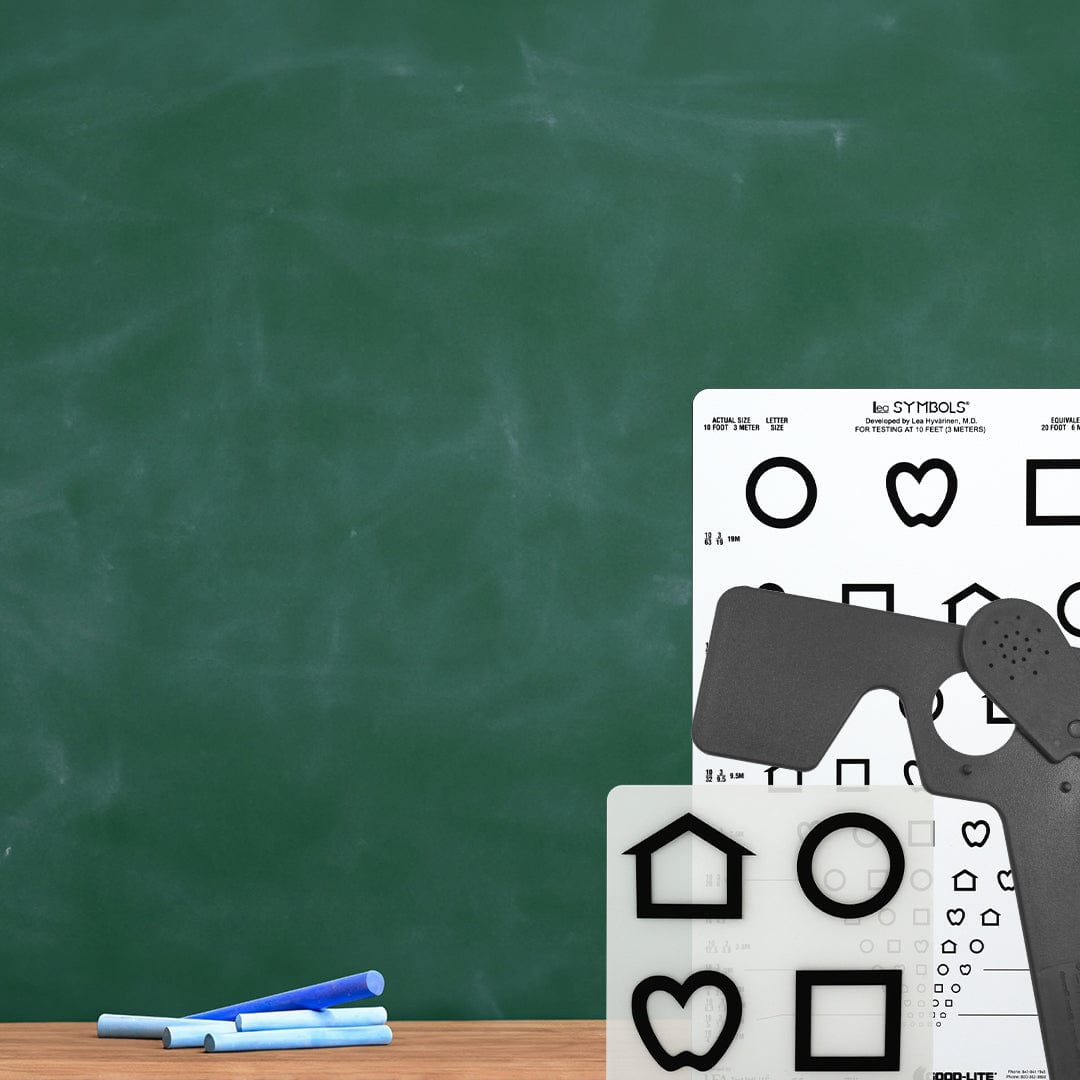Table of content
About The LEA® Vision Test System
The LEA® Vision Test System is a comprehensive series of pediatric vision tests designed specifically for children who have not yet learned to read letters. These tests are used to assess a wide range of visual capabilities, including near vision and distance vision. They also address several other aspects of vision and occupational health, such as contrast sensitivity, visual field, color vision, visual adaptation, motion perception, and ocular function and accommodation.
History
The LEA® Vision Test System was first developed in 1976 by Finnish pediatric ophthalmologist Dr. Lea Hyvärinen, MD, PhD. Dr. Lea, as she is affectionately known, completed her thesis on fluorescein angiography and helped establish the first clinical laboratory in that field while serving as a fellow at the Wilmer Eye Institute of Johns Hopkins Hospital in 1967.
During her time at the Wilmer Institute, she developed a keen interest in vision rehabilitation and assessment, a field she has been dedicated to since the 1970s. Dr. Lea has trained rehabilitation teams, designed new visual assessment devices, and taught extensively.
The first test she created within the LEA® Vision Test System was the classic LEA Symbols® Test, followed shortly by the LEA Numbers® Test, which was used in comparison studies within the field of occupational medicine.
Accuracy
The LEA Symbols® tests are unique among visual assessment picture tests as they are calibrated against the standardized Landolt C vision test symbol. The Landolt C, used globally as a standard symbol for measuring visual acuity, is identical to the "C" used in traditional Snellen charts.
The LEA Symbols® test has been experimentally verified as both a valid and reliable measure of visual acuity. Each of the four optotypes used in the symbols test has been proven to measure visual acuity consistently, with all symbols blurring equally, which supports the test's internal consistency.
A study published in Acta Ophthalmologica Scandinavica in 2006 demonstrated the clinical usefulness of the LEA Symbols® 15-line folding distance chart in detecting deficiencies in visual acuity in preschool children. This study, which compared visual acuity diagnoses from LEA Symbols® tests to those obtained through ophthalmological examinations, found that the LEA Symbols® chart provided an accurate and sufficient assessment in 95.9% of the 149 preschool-age children tested. This suggests that LEA® tests are a reliable alternative to more costly and time-consuming pediatric visual acuity tests.
Versions
The LEA® Vision Test System currently includes over 40 different tests targeting various aspects of vision and communication deficiencies in both children and adults.
LEA Symbols® Test
The oldest and most basic form of the LEA® test is the "LEA Symbols® Test." This test consists of four optotypes: the outlines of an apple, a pentagon, a square, and a circle. These symbols can be easily identified as everyday objects ("apple," "house," "window," and "ring"), allowing preschool children to be tested for visual acuity long before they become familiar with the letters and numbers used in other standard vision charts. The LEA Symbols® Test is often used in the form of the three-dimensional LEA 3-D Puzzle®, which incorporates color along with the four standard optotypes to measure visual acuity in children as young as fourteen months old.
LEA Numbers® Test
The "LEA Numbers® Test" was the second LEA® test developed and is used to test the visual acuity of older children and adults. This test has a layout similar to a typical Snellen chart, with lines of numbers decreasing in size towards the bottom of the page. Like the optotypes of the LEA Symbols® Test, these numbers are calibrated against the Landolt C and blur equally.
LEA Grating Acuity Test
This test assesses grating acuity, especially in children with severe or multiple visual deficiencies. The "LEA Gratings® Test" has been shown to be successful in vision testing of children with brain damage and is the only test that can reveal their limited capacity for processing large numbers of parallel lines.
LEA Contrast Sensitivity Test
Visual information presented in low contrast settings is crucial for visual communication. It is especially important to assess a child's contrast sensitivity at a young age to determine how well the child can distinguish facial features. A popular test designed for this purpose is the "Hiding Heidi Low Contrast Face Pictures" test, part of the LEA® Vision Test System. This test uses a series of cards depicting cartoon faces with different contrast levels. The contrast sensitivity assessment obtained from this test is essential in educational settings because children with contrast deficiencies have extreme difficulty receiving visual cues from body language or facial expressions and often struggle to read the blackboard or projector.
Importance
The unique design of the LEA® tests, with their special optotypes, allows for the diagnosis of pediatric low vision in children at much younger ages than standard vision tests permit. This is particularly important for young children with other physical or mental disabilities who are entitled to receive early special education benefits. More than half of children with low vision also have other impairments or disabilities. Many LEA® tests can also be used on children with significant brain damage, serving as one of the few methods to accurately assess visual acuity in these situations.
Partnering with Good-Lite®
Good-Lite is proud of our longstanding relationship with Dr. Lea Hyvärinen and is honored to be the exclusive manufacturer of physical LEA® system charts in the United States. This partnership ensures that we continue to provide reliable and innovative vision assessment tools for children and adults alike.










